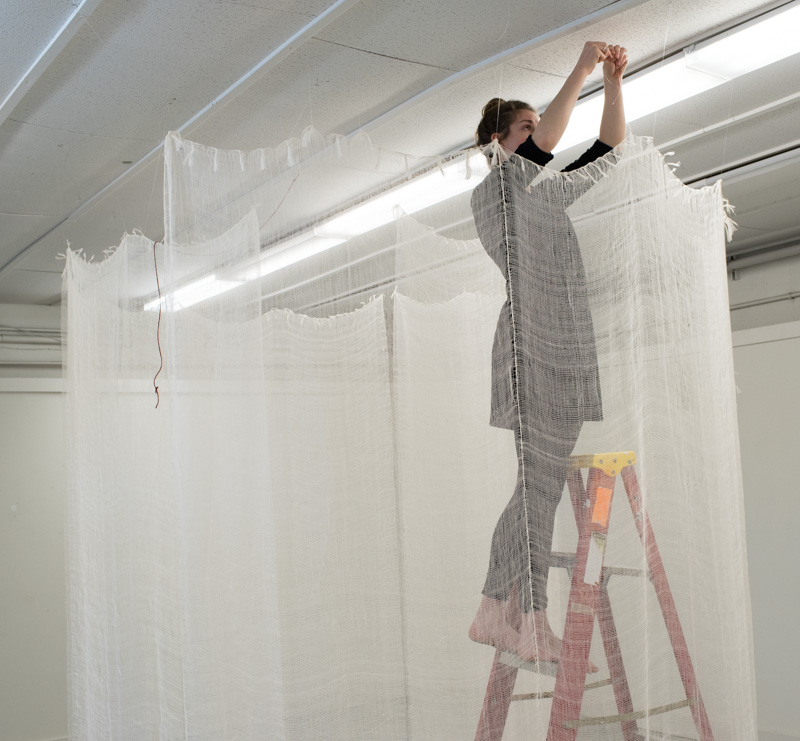At long last! Our 2017 Resident Artist Program selection process is complete. We received an outstanding pool of 61 applications from across the United States for the four available positions. Our selection committee did an excellent job reviewing and evaluating applications; it is a thorough process, and we couldn’t do it without the time and energy they give so generously. Thank you to everyone involved in this year’s selection.
We would like to officially announce and welcome four new resident artists who will arrive at Penland September 15, 2017 to begin their three-year residencies.
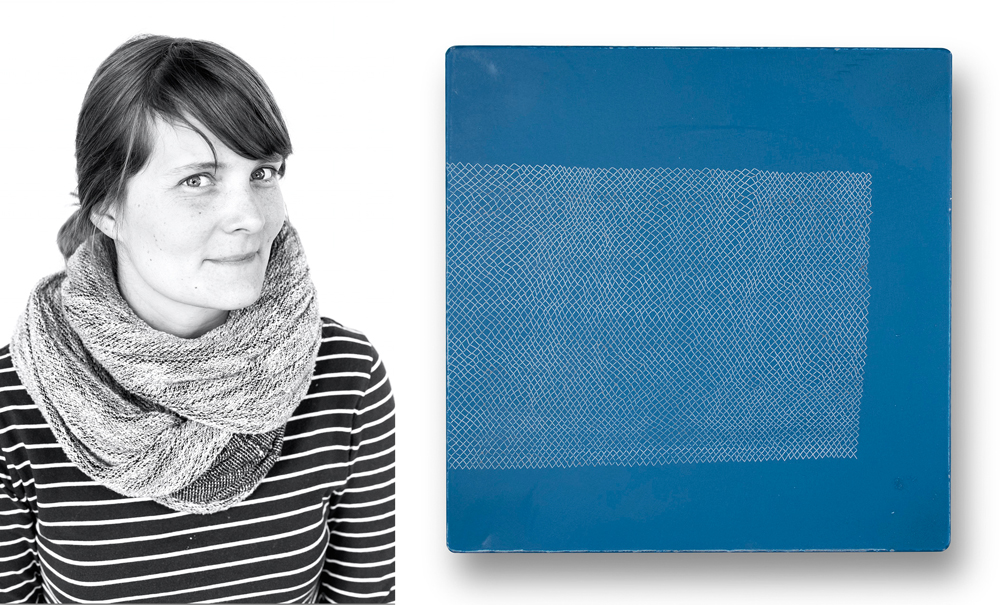
Eleanor Annand
“The expressive qualities of a line and the development of visual history are at the root of my work. I create drawings, paintings and prints that tell the story of my line. Process is at the forefront of this exploration. In a state of deep meditation I search for order and progress amidst a restless mind. Through scribed and abraded surfaces images emerge as representations of this often raw state of mind.”
Eleanor Annand currently lives in Asheville, NC, where she has been co-owner and art director at 7 Ton Design & Letterpress Company since 2015. She maintains a studio practice and exhibits her prints, drawings, and paintings on steel at galleries throughout the US and Canada. She has a Bachelor of Graphic Design from the College of Design at North Carolina State University and was a core fellow at Penland from 2010-2012. In 2016 she taught at Penland for the first time. This winter Ele is a resident at the Jentel Artists Residency Program in Banner, WY. During her residency at Penland, Ele plans to develop innovative uses for the press using printed and folded paper; combine printing, mark making, and design to create new work; and explore new formats for her work at a larger scale.
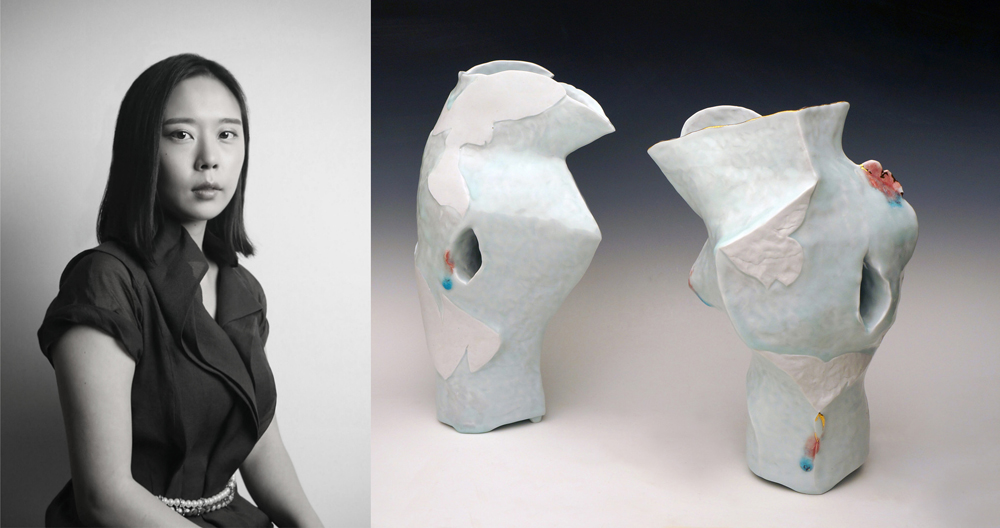
Yoonjee Kwak
“In Korea, when people talk about someone’s personality, we often use vessel as a metaphor of one’s spirit of tolerance… When I work with clay, my interactive conversation with the clay is vital to the process. While I slowly build up clay coils from the bottom, my hand marks remain on the surface. It records elements of movement, time and my feelings.”
Originally from South Korea, Yoonjee Kwak currently lives in Rochester, NY, where she is a resident artist at the Rochester Institute of Technology. She exhibits her functional objects and sculpture throughout the US and South Korea. She received a BFA in Ceramics and Glass at Hong-Ik University in Seoul, South Korea before earning her MFA in Ceramics at the School for American Crafts (SAC) at Rochester Institute of Technology in 2014.
She was selected as a 2016 Emerging Artist by Ceramics Monthly and was a summer resident artist at the Archie Bray Foundation, Helena, Montana that same year. Yonjee has spent time at Penland as both a student and a studio assistant. During her residency she intends to expand the scale and scope of her work, experimenting with installation and the relationships created among multiple works presented as a group.
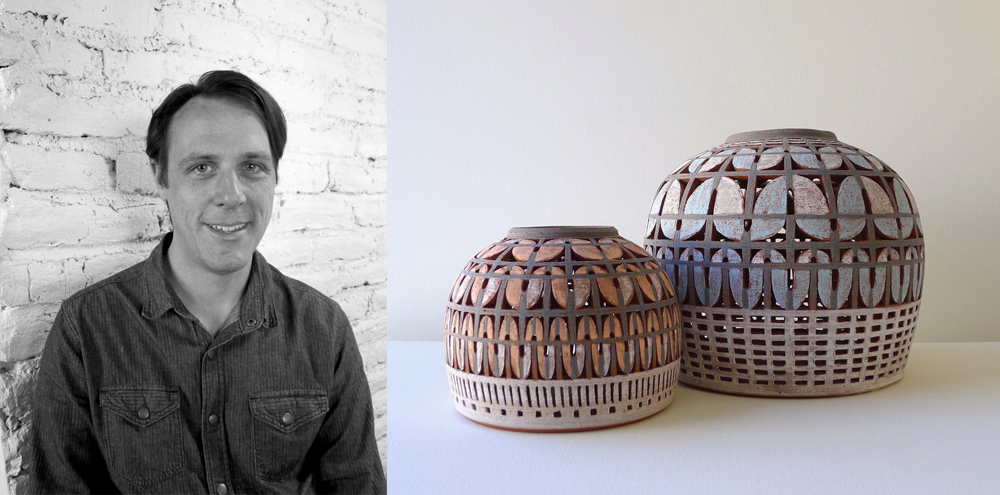
Matt Repsher
“I draw inspiration from architecture and how repetition is used to create structure and form in buildings. Using pots as my canvas, I carve and paint the surface to appear as if it is built by layers of arches, posts, lintels, and discs… My interest in pattern has moved me towards a long-term investigation of how the layers of carved and painted patterns can optically alter and manipulate the profile of my pots, visually stretching and compressing the vessels.”
Matt lives in Santa Fe, NM where he maintains a studio while teaching occasional workshops and classes. His work is represented by several esteemed craft galleries and has been shown throughout the US in group and solo exhibitions. Matt has a BFA from Pennsylvania State University and an MFA from Indiana University. He was the studio director at Santa Fe Clay from 2005-2008 and a resident artist at the Pocosin Arts Center (NC) from 2015-2016. Matt co-taught a concentration at Penland last fall. He looks forward to his residency at Penland as a way to be surrounded and influenced by the collective energy of artists working in all media. He plans to research pattern, material, and form through both 2D and 3D explorations.
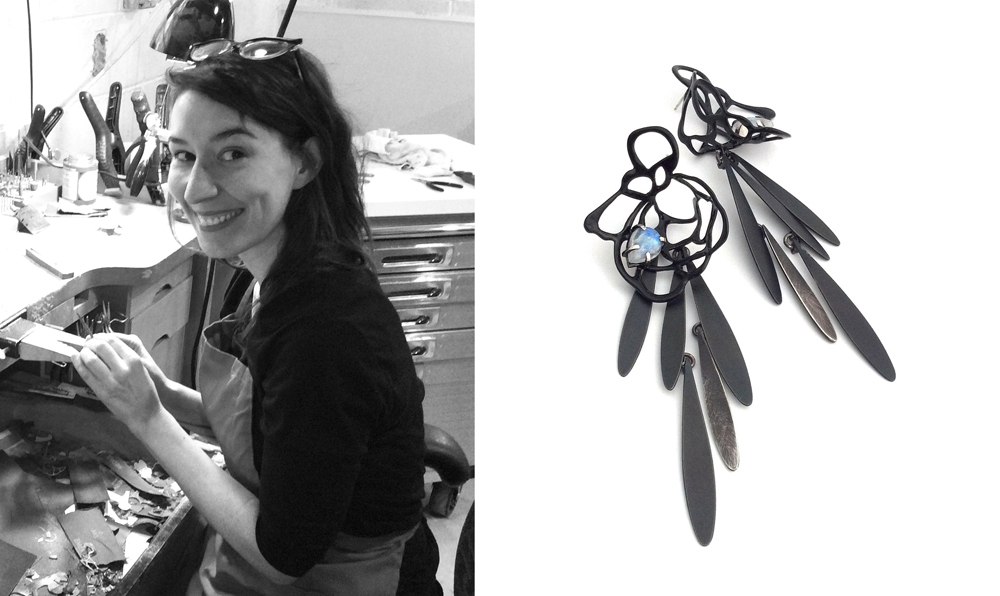
Laura Wood
“I began exploring the human form through dance. When I made the transition from dance to ornamentation to express my creative interests, one common thread emerged: a passion for the body and how this instrument is closely linked with our personal identities. This history of corporeal study will always be a driving force behind the work I create.”
Laura Wood is a jewelry artist living in Asheville, NC. Her work has been selected for many exhibitions throughout the US, most recently as a 2015 SNAG Emerging Jewelry Artist at SOFA Chicago. Her work can be found in select galleries throughout the US and in the permanent collections of the Gregg Museum of Art at North Carolina State University and The Racine Art Museum in Wisconsin. Laura was the founding voice of the annual ECU Symposium and is a co-founder of Jewelry Edition, a creative project to facilitate the growth of jewelry artists. Laura presented at the 2015 Yuma Arts Symposium and taught a spring metals concentration at Penland in 2016. She earned a BFA from the University of Georgia and an MFA from East Carolina University. As a resident artist Laura wants to expand her studio practice, amplify her teaching philosophy, and connect with the Penland community to better understand how artists can sustain and evolve a place in the craft world.
There will be three openings in the Resident Artist Program in 2018. The application deadline is January 15, 2018; artists working in all media will be eligible.
Save
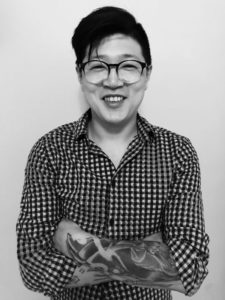
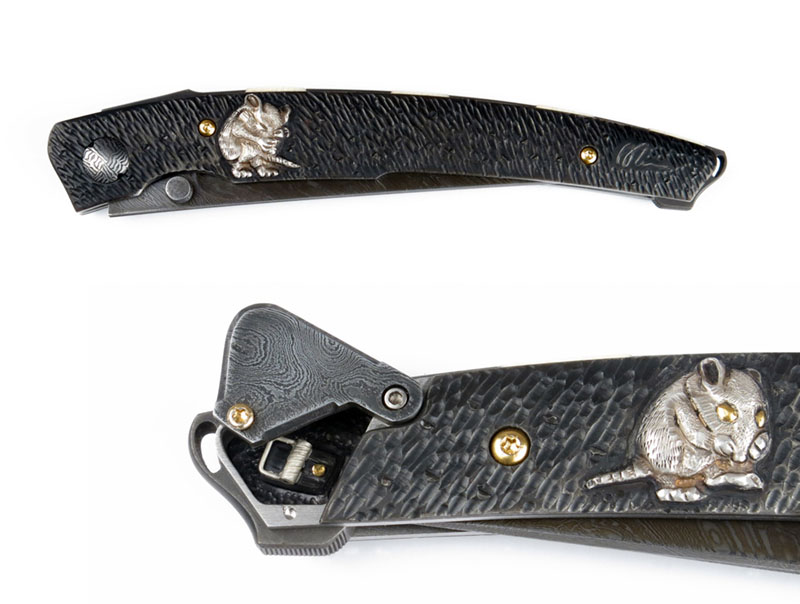






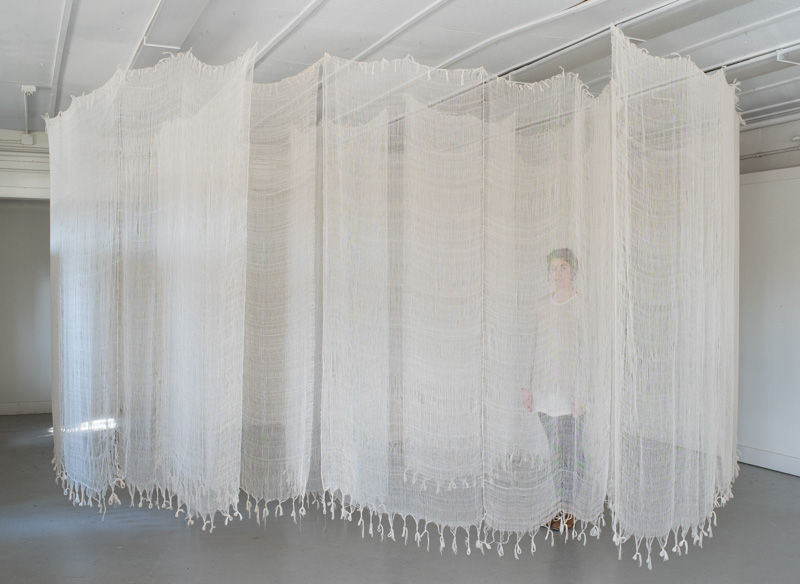
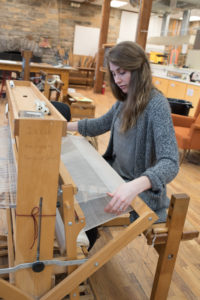 Katie has a friend whose grandmother is a weaver and belongs to a weaving group that meets every Wednesday night at an adult education center in Covina, California. “They have a group space with 150 looms,” she said. “They call their Wednesday night sessions a ‘class’ and they’ve been going on for eighty years. I was the youngest person there.” The other weavers taught her the basics of the floor loom, and in the 2016 residency she began working on her current project.
Katie has a friend whose grandmother is a weaver and belongs to a weaving group that meets every Wednesday night at an adult education center in Covina, California. “They have a group space with 150 looms,” she said. “They call their Wednesday night sessions a ‘class’ and they’ve been going on for eighty years. I was the youngest person there.” The other weavers taught her the basics of the floor loom, and in the 2016 residency she began working on her current project.